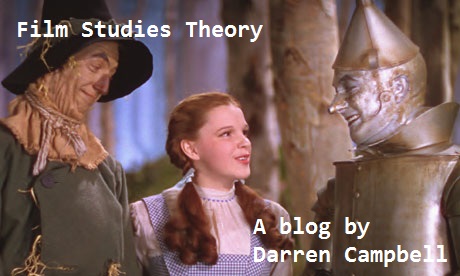Peter Hutchings "Genre Theory and Criticism" examines the positive achievements of 1970s genre study as well as the influential early work on film genres by key genre theorists. This is a highly interesting chapter of the book and gives a real insight into the early study of the genre theory, which seemed to anticipate developments that were made by theorists in the 70's. "an awareness in all three writers of what might be termed here the 'liveliness' and changeability of genres."(Hutchings, 1995, p.65)
Each of the early key genre theorists were of importance to its development, though each had their own individual outlook. "Andre Bazin, Robert Warshow and Lawrence Alloway. All shared the belief that genres carried an intrinsic meaning or significance, but each adopted a different way of thinking about this." (Hutchings, 1995, p.61)
Bazin, the most well-known of the early theorists, had particular difficulty determining why certain cultures were interested in movies historically significant to other countries: "What can there possibly be to interest Arabs, Hindus, Latins, Germans, or Anglo-Saxons, among whom the western has had an uninterrupted success, about evocations of the birth of the United States of America, the struggle between Buffalo Bill and the Indians, the laying down of the railroad, or the Civil War!" (Hutchings, 1995, p.62)
Bazin knew that the success of these movies was attributed to more than the typical formal qualities of setting, objects and scenarios. The formal attributes of a western are “simply signs or symbols of its profound reality, namely the myth.” (Hutchings, 1995, p.61) Myths can be a universal and timeless story of good vs evil, with good almost always triumphing over evil.
Genre was a very interesting topic to study and one that I have prior knowledge of. We were posed with the opening question: "what constitutes a film genre?" There are (usually) certain similarities between movies that help to define which genre they belong to.
Genre films are able to attract audiences and become financially successful because they temporarily relieve the fears aroused by recognition of social and political conflict.
One question that was raised was: "is animation a genre?" I have always felt very passionate about this and feel animation is better described as a medium or an art-form.
We examined several movie clips during todays session. In "The Searchers" we discussed the main character as being an outsider, who comes along to save the day. He carries the girl into her house, like a child, in classic hero fashion. In "Annie Hall" we watched as two characters broke the fourth wall and directly addressed the audience. This is uncommon in movies, particularly in 1977, the year it was released. In "Singing in the Rain, a character starts to sing in the rain, very happy despite the unpleasant circumstances. As an audience we apply a suspension of disbelief towards this behavior which is accepted because we have different expectations for a musical than a film.
I also learned about iconography, where icons are second-order symbols and their symbolic meaning is not necessarily a connection established within the individual text. It is already symbolic because of its use in previous movies.
This week I watched Scream and Halloween. These movies are Horror - Slasher films with many similarities. Halloween is considered to be the first "true" slasher movie, whilst Scream arrived at a time when the slasher concept was becoming tired and completely rejuvenated it.
Scream essentially parodies all the cliché moments of horror movies, like Halloween, and so it was interesting to watch and compare them. Craven uses sound, camera shots, and mise en scène in a clever way to scare the viewer and keep them guessing as to who the murderer is. Halloween, very similarly uses music to instill fear, using the "Michael theme" to give indication that something bad is going to happen.
A number of occurences in the movies were already long established in the horror genre such as a long silence followed by a loud startling noise. This is an example of the use of iconography, as it is already symbolic because of its use in previous movies. Additionally, most of the horror scenes take place at night, tapping into our natural fear and helplessness in the dark.
Scream takes long established horror conventions established in previous movies and plays with them. In one scene, the character backs away from the camera, usually she would back right into the killer but in this case she doesn't. Craven messes with the audiences subconscious, misleading them into thinking something is about to happen.
Scream comes to an effective conclusion, the killers are killed and the survivors taken to hospital. However, Halloween leaves the story wide open when Michael Myers seemingly dead body vanishes. Generally genre films are well tied up at the end and Horror is one of the only exceptions to the rule.
Reference list
Hutchings, P., 1995. Genre Theory and Criticism in Joanne Hollows and Mark Jancovich, eds., Approaches to Popular Film. Manchester: Manchester University Press.
Word count: 923
Word count (exc. quotes and reference list): 741


